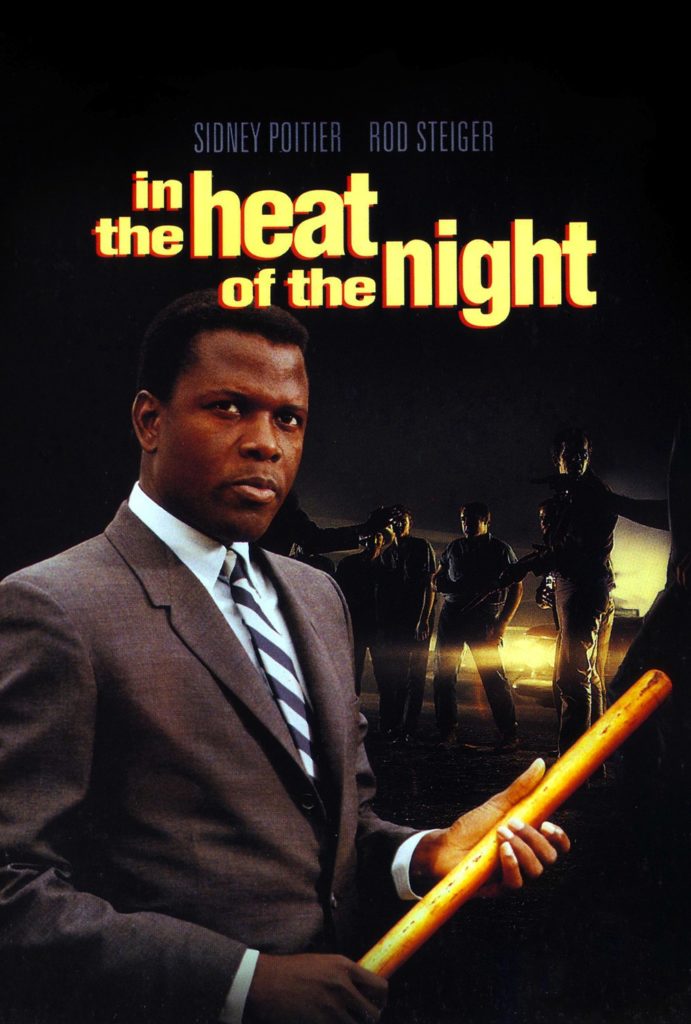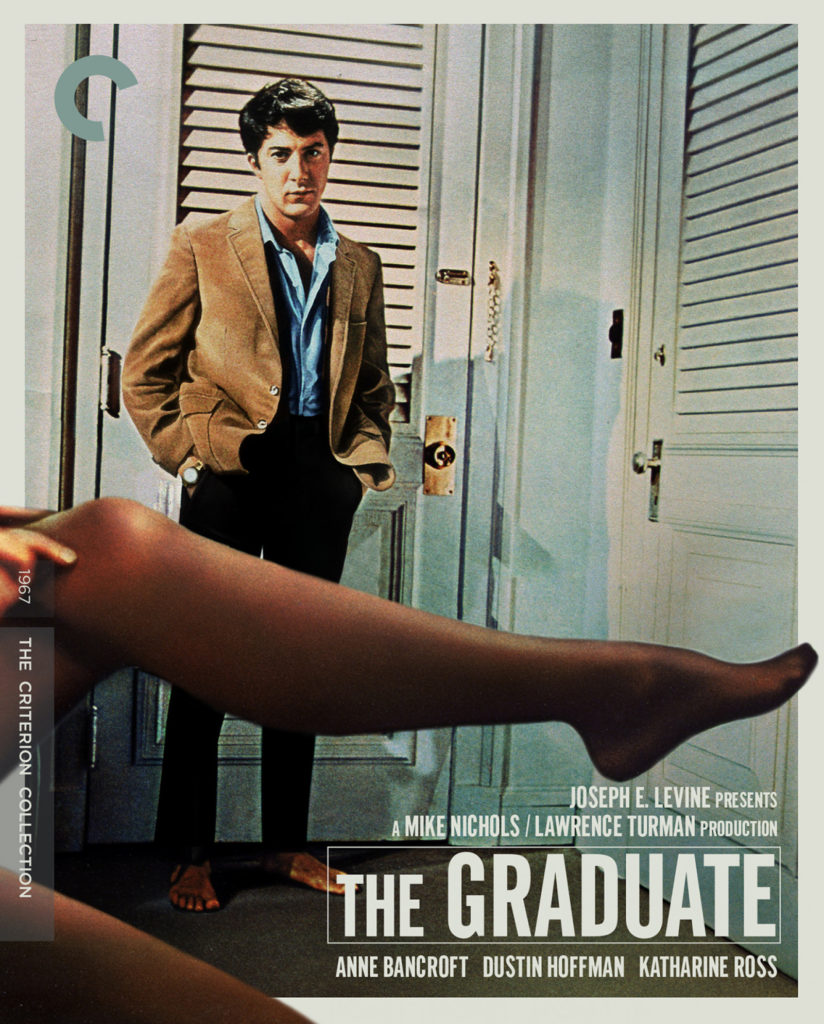1967
1967 is generally thought of as a year of major change for the film industry. Movies considered “revolutionary” brought an evolutionary leap in style, in technique, in content, in spitting in the face of the Hays Code’s outdated and never-accurate conceptions of “morality.” We’re gonna dive into two of those very movies.
If I had to apply a theme to our two movies of ’67, it would be “White People: Not Great.”
In one case more than the other.
And The Oscar Goes To…
Philadelphia homicide detective Virgil Tibbs (Sidney Poitier) gets drawn into investigating the murder of a prominent businessman in small-town super-racist Mississippi, after being initially presumed the killer because he was black and in town on the night of the murder. Chief Gillespie (Rod Steiger) doesn’t really want Tibbs involved, because he doesn’t like admitting this black man from up north is better at crime-solving than him, and Tibbs initially doesn’t want to get involved because he’s eager to see the back of this ignorant, bigoted, hick-town hellhole. But the victim’s widow threatens the town’s fiscal future if they don’t find the killer, and believes Tibbs is needed to do so; and Tibbs’ CO volunteered him, and when it comes down to it he relishes a chance to show up the locals and bring a racist to justice… even if it might not be the one he wants.
And honestly as an examination of America’s problems with white supremacy, it works much better than more recent Message Movies about how Racism Is Bad that boil down down to “watch this privileged white person have black friends.” It’s not just because there’s a murder mystery at the heart of the story, although as Mary Poppins said, a spoonful of sugar helps the medicine go down. No, the fact that Tibbs is trying to solve a murder and save a town brings the savage racism that’s surrounding him into sharper focus. The greatest obstacles between Tibbs and justice are intolerance and hatred, and the question becomes will he find the truth before the lynch mobs start to form over him daring to be black in their town?
It’s uncomfortable but gripping, anchored on a quietly powerful performance from Sidney Poitier (whose “They call me Mr. Tibbs” remains iconic to this day) and a blustery but nuanced turn from Steiger that won him an Oscar. Limiting any sort of music mostly to driving scenes or transitions adds a lot of tension to key scenes, as there’s nothing to distract from the threats Tibbs is faced with.
Just an excellent piece of cinema and our most powerful condemnation of bigotry since Gentleman’s Agreement over twenty years back. It even uses the Confederate battle flag as a shorthand for “these are violent racists and bad people,” which for the 60s is a big swing.
And Rotten Tomatoes Says: It comes in at #45, one spot above From Here to Eternity, and honestly putting those two next to each other feels a little insulting. Moreso when I remember what a big deal they made about Eternity’s lead being named after slavery defender Robert E. Lee.
What’s Good, Hays Code? Wouldn’t I like to think that the Hays Code considered racial slurs to be one of the things they were protecting innocent Americans from. Pretty sure they weren’t. However, a local teen with a habit of exhibitionism doesn’t quite break rules but is surely playing “I’m not touching you, I’m not touching you” with them.
The Box Office Champ
Oh man how I’ve been waiting for Dustin Hoffman to show up in these things. Much love to Gable and Crosby and Peck, but it is nice to have young Dustin around. Well, younger. He was about ten years older than his character and looked it but still.
Ben Braddock has just graduated college, has no idea what to do next, and is in a deep depression about it. He ends up being lured into a passionless affair by a family friend, Mrs. Robinson, which is complicated when he falls for Mrs. Robinson’s daughter Elaine. (I call it “White People: Not Great” because Ben’s specific “Now what” malaise feels like a white person problem in the 60s, especially next to Virgil Tibbs risking his life by being on a public street in Mississippi.)
It’s a very bleak script, as Ben’s situation is toxic to everyone in it, and the final shot reveals that the seemingly happy ending is likely anything but, as Ben and Elaine slowly realize that they have no idea what to do next. That said, it’s also very funny, thanks mostly to Dustin Hoffman, who keeps his performance as Ben muted, but that just makes his minor cracks even funnier. For instance, in the sequence when Ben flees a seduction attempt from Mrs. Robinson, only to run into Mr. Robinson, Ben tries to remain neutral but Hoffman lets slip hints of the white-hot panic beneath the surface, and it’s damn funny. It’s all very interestingly shot, especially the montage of Ben and Mrs. Robinson’s affair that shows how bleak and meaningless it is for Ben, and how time is just slipping past him while it happens. And scoring the movie to Simon and Garfunkel tunes adds a slightly melancholic atmosphere.
It’s not exactly a feel-good romp but it’s a solid watch, well over most of what I saw in the 50s.
And Rotten Tomatoes Says: The critics love the acting and the soundtrack from Simon and Garfunkel, making it certified fresh at 87%. Audiences give it a 90.
What’s Good, Hayes Code? “What? Us? Show Mrs. Robinson’s nipples for a fraction of a second? Nah, man, you must have imagined it. [whispered to friend] They didn’t imagine it.” I mean, it’s tamer than Hawaii, but still. The late 60s have had it with rules about sex and nudity.
Other Events in Film
- This Year in Bond: James Bond comes face to face with Blofeld for the first time in the uncomfortably yellow-panic-ish You Only Live Twice. After this one, Connery decides he’s done with role. (He wasn’t done with the role.)
- Far, far less officially, Casino Royale parodied Bond stories with David Niven as a retired Bond pulled back into service. I don’t think it counts but I will not have people accusing me of forgetting it.
- Sidney Poitier took a bigger swing at 60s race politics in Guess Who’s Coming to Dinner. It came in second at the box office, so audiences were up for having their values challenged.
- The 60s also break ground through true-crime pictures Bonnie and Clyde and In Cold Blood. Bonnie and Clyde broke taboos about violence possibly even more than The Graduate broke taboos about sex.
- The men-on-a-mission pic that would inspire countless homages, The Dirty Dozen, unites a team of big-name 60s tough guys.
- Two of Walt Disney’s final three projects hit screens. The Jungle Book is an enduring favourite that never turns up in the parks for some reason, and The Happiest Millionaire flopped so hard Disney+ doesn’t even want it.
- The 60s are still all-in on musicals, as Lerner and Lowe’s Camelot came in 10th and picked up some Globes and Oscars for songs and score. Don’t watch it, it’s not good, also it was a disastrous production and almost sunk Warner Bros. and did some damage to musicals as a genre. Thoroughly Modern Millie, also this year, was likely better.
- Doing even more damage to musicals was Doctor Doolittle, starring My Fair Lady’s Rex Harrison (despite the fact that he still couldn’t sing), which bombed hard and also lost so much money on failed merch it killed the idea of movie merchandise… for a while.
- Peter Cook and Dudley Moore brought a lot of funny in the Faustian comedy Bedazzled.
- Future double act Richard Pryor and Gene Wilder both made their film debuts, in different movies: The Busy Body and Bonnie and Clyde, respectively.
Next Page: Back to singing


